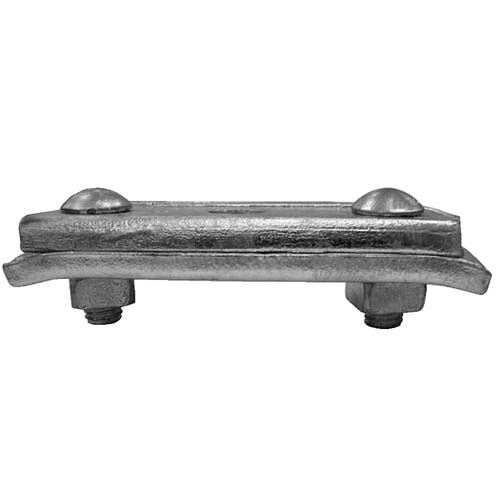
A crossover clamp is an essential tool required for overhead power line installations. It is a type of hardware used to secure and support overhead power lines. The clamp has designs that enable them to hold two conductors together at a crossover point. This ensures proper spacing and alignment while maintaining electrical conductivity. Crossover clamps also help maintain the structural integrity of the power line configurations. The clamp is from durable materials such as aluminum or steel that help withstand mechanical stresses. Use of crossover clamp helps prevent electrical fault, increase stability and improve insulation. It also ensures uninterrupted power flow, reduce maintenance and extended lifespan. Installation of crossover clamps requires specialized skills and knowledge of proper procedures.
Functions of crossover clamp
Crossover clamps are the unsung heroes of power grids by working behind the scenes. They help to ensure the safe, efficient and reliable transmission. Their functions make them vital components for maintaining stable and dependable power supply. The following are the various functions of crossover clamps in power line installations.
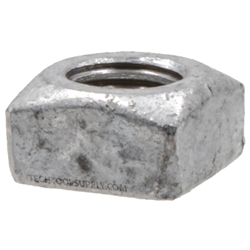
- Secure conductor crossing – the main function of the clamps is to hold two or more conductors together at crossover points. They maintain the proper alignment and spacing between the conductors.
- Electrical continuity – the clamps ensure electrical continuity across the crossover points. This is by providing a secure and stable connection between the conductors. This helps to maintain the flow of electricity through the power line without interruptions.
- Safety – they also contribute to the safety of power line installations by holding the conductors in place. They help reduce the risk of electrical hazards such as shocks, arcs and equipment damage.
- Weight support – crossover clamps serve as structural function by supporting the weight of the conductors at crossover points. This prevents sag and excessive strain on the conductors which contributes to stability of the power line.
- Damage prevention – the clamps prevent direct contact between crossing conductors. Contact could result in electrical faults and short circuits. They help reduce the risk of accidental contact and other issues.
- Ease of maintenance – crossover clamps allow for easy installation and removal of conductors. This facilitates maintenance and repair activities on the power line. The clamps provide a convenient point for accessing and working on the conductors without compromise.
Types of crossover clamp
There are various types and designs of the crossover clamp to select from. The selected clamp should be able to secure and support overhead conductors for efficiency. The type of crossover clamp selected varies depending on factors such as type of conductors, environmental conditions and specific requirements of the application. the following are the various types of crossover clamps to select from.
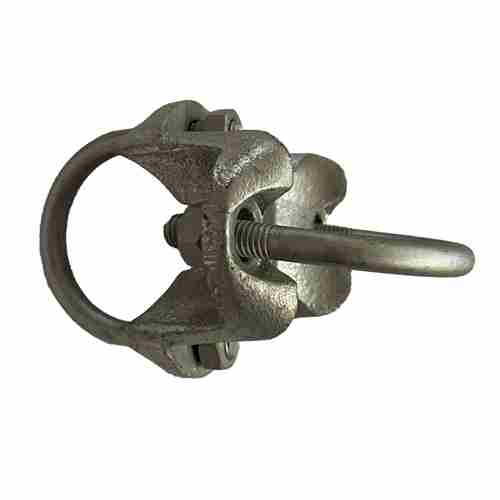
- Bolted crossover clamps – these clamps have a bolted design where the conductors secure by tightening bolts and screws. The clamps provide a strong and reliable connection between the crossing conductors.
- Parallel groove clamps – these are clamps that have parallel grooves to hold the conductors. They help maintain proper alignment and spacing on the lines.
- Dead-end crossover clamps – these clamps work at the ends of conductors to end them. The clamps may work in conjunction with other types of clamps to create stable crossover points.
- Compression crossover clamps – these use compression fittings to secure the conductors. Their design allows them to apply pressure across the conductors to ensure a secure and stable connection.
- Suspension crossover clamps – these help to support the weight of overhead conductors at crossover points. They incorporate a combination of clamping mechanism along with suspension hardware. This helps the clamps to provide both support and electrical connectivity.
Classification of crossover clamps used on transmission lines
Crossover clamps for overhead power lines classify based on various factors such as design, function and type of conductors. The classification helps to identify and select the suitable crossover clamp based on application requirements. Additionally, it is advisable to consult with a qualified engineer and manufacturer to ensure safe, reliable and efficient operation of your application. The following are the various classifications of crossover clamps.
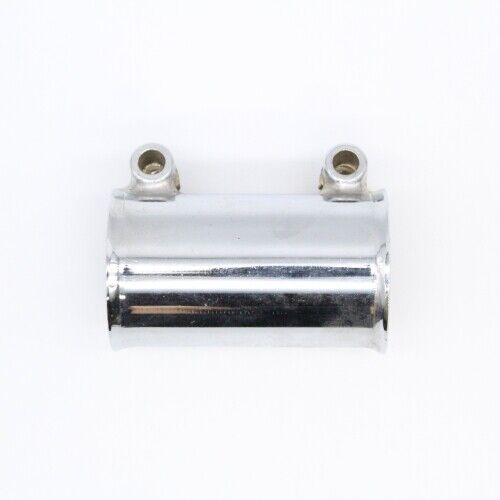
- Design classification – crossover clamps are available in various designs. These include bolted clamps, compression clamps, parallel groove clamps and suspension clamps. Each of these designs provide specific advantages to the application.
- Function classification – there are various functions of crossover clamps as discussed earlier. There are crossover support clamps that help maintain proper alignment. The crossover dead-end clamps work at the end of the conductors to end at crossover points.
- Conductor type classification – the materials used for the clamps also influence the classification. These may include aluminum conductor crossover clamps, copper conductor crossover clamp and aluminum-steel conductor crossover clamp. Each clamp provides different benefits to each application.
- Automatic and manual operation – some clamps feature automatic locking mechanisms that engages when the conductor inserts. This provides a quick and secure connection without manual tightening. Some other clamps need manual tightening to secure the conductors in place.
Crossover clamps sizes and diameter
There are no specific sizes and diameter of crossover clamps since they vary depending on various factors. Such factors include type of conductors, application and specific requirements of the installation. It is advisable to choose the right clamp based on your application requirements. Also, it is necessary to consult with qualified professionals for guidance on the best size and diameter of the clamps for your specific needs. The following are the factors influencing the sizes and diameter of the crossover clamp.
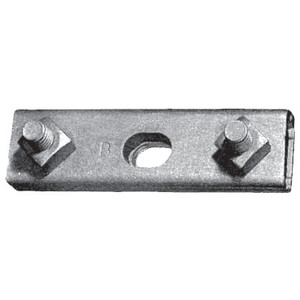
- Diameter range – crossover clamps are able to accommodate a range of conductor diameters to ensure proper fit. Manufacturers should specify the acceptable diameter range for each type of crossover clamp. This is to ensure compatibility with a variety of conductor sizes.
- Installation needs – the size and diameter of crossover clamps vary based on the installation requirements of the power line. Consider factors such as spacing between conductors, configuration of the power line and type of support structures.
- Conductor size – the size of the clamp should match the size of the conductors they are to support. Conductor sizes vary depending on factors such as the voltage rating and current carrying capacity of the line. Crossover clamps are able to support conductor sizes ranging from smaller diameter cables to larger diameter cables.
- Material and construction – the size and diameter of the crossover clamps also depends on the material and construction methods used. The clamps are from materials such as aluminum, steel or bronze which help them withstand the mechanical stresses. The size and diameter of the clamp provides the necessary strength and support while reducing weight.
- Industry standards – the clamps should adhere to industry standards and specifications. These standards may include requirements for size, diameter and performance of crossover clamps. They help to ensure compatibility in power line applications.
Features of crossover clamps
Crossover clamps have various features that contribute to their functionality, reliability and safety. They provide secure and reliable connections at crossover points. This is while ensuring the integrity and performance of the electrical system. The features have designs to meet the demanding requirements of power line applications. They are also able to withstand the challenging weather conditions. the following are the various features of the crossover clamps.
- Secure Hold – after installation, these clamps stay in place by built-in locking mechanisms that prevent movement and assure constant stability for attached wires.
- Managing the Load – select the load capacity that best suits your requirements. Crossover clamps ensure efficient conductor management by bearing a large amount of weight and strain.
- Accurate Positioning – the clamps work with assistance of dependable bolts, pins or other fastening mechanisms. They also have grooves carved into either half of the clamp to securely contain and guide the conductors.
- Conductive Champions – the core components of these clamps are from high conductivity materials. These include composite polymers, aluminum and galvanized steel, which guarantees effective electrical flow.
- Strength in Numbers – these clamps robust materials provide remarkable mechanical strength.
- Extra Protection – to offer an extra degree of safety and comfort, insulating materials are sometimes included between the conductor and the clamp in certain designs.
- Customized Solutions – high-voltage applications, different conductor sizes and materials are available from specialized designs.
- Weathering the Storm – these clamps resistance to temperature ensures that they will not fail in any situation. This is including intense heat or freezing depths.
- Adjustable – some types may fit a variety of pipe or conduit diameters, which increases their adaptability and expands the range of uses for them.
Frequently asked questions
A crossover clamp is a hardware used to securely hold two or more conductors together at crossover points. Its main function is to maintain proper alignment and spacing between the conductors. It does this while ensuring electrical continuity and preventing contact.
There are various types and designs of the clamp to select from in the market. They include bolted clamps, compression clamps, parallel clamps, suspension clamps and dead-end clamps.
Consider factors such as conductor size, diameter range, material and construction, installation requirements and industry standards. This consideration helps to ensure compatibility, reliability and safety in power line applications.
